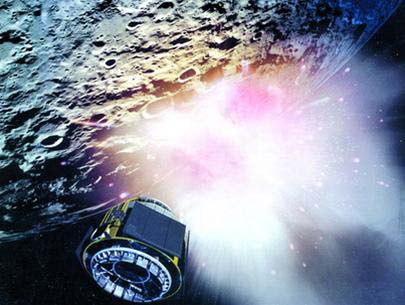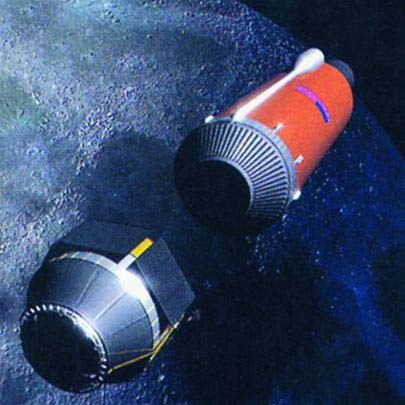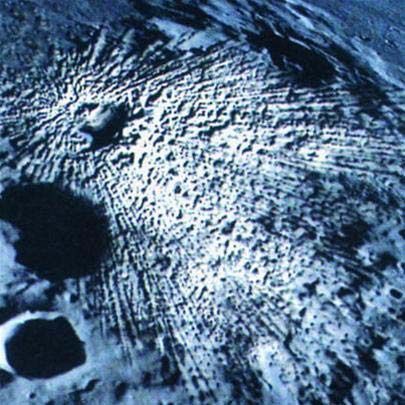NASA: Moon's 'Crash' in 2008
Before sending astronauts to life at the Moon by 2020, NASA is ordered by the White House to find out what resources can be exploited from there.

In the Moon, there are ice reservoirs that can be melted to supply oxygen and extract hydrogen to fuel rockets? Or is there any other fuel hidden in the rock? In response, NASA made a plan to be carried out in 2008: throwing two ' rocks ' into the hole near the south pole of the moon and studying . what flew out!
Hydrogen gas was found below the ground layer, in previous explorations. Anthony Colaprete, an expert at NASA, said: ' The key issue here is to find out how hydrogen is stored: in the form of ice, ore or free protons, in Moon rocks. This information will help us get the right direction to exploit it . '
Prepare

The Lunar Crater Observation and Sensing Satellite complex, also called LCROSS, includes a 1,540-pound heavy-duty spacecraft with a camera and a 4,400-pound heavy-duty top-flight missile that takes ships into space. After launching in October 2008, the two conjoined parts orbited the Earth and Moon orbit during a three-month journey. When they reach the Moon, they will separate. The upper floor weighs 4,400 pounds and falls freely, plunging straight into the Moon's Shackleton pit.
Touch!

This mass of steel plunges straight to the surface that makes the rock on the Moon - possibly ice - splashed into space! Amateur astronomers with 10-inch telescopes can see this phenomenon clearly. The puncture hole, which can be up to 5m deep and 30m wide, is like a bomb pit. Because this missile floor burns all the fuel when it takes the ship into space, it doesn't contaminate the dusty components of the space.
Measurement

Infrared cameras and light rays often mounted on the ship will measure the chemical composition of the dust cloud and send data to the Lunar Reconnaissance Orbiter (LRO) station with an image rate of 1.5 Mbps until the version The body is " all over " also falls to the Moon!
Building bases

After the dust cleared, the LRO would circumnavigate the Moon to delve into the hole: using an altimeter to accurately draw the shape of the pit and its cameras would scour to find traces of ice. If the results are great, by 2020 with the LCROSS data and the next available flights, NASA will exploit the Moon's oxygen and hydrogen potential to support a manned base here.
CENTRAL
- 5 NASA steps dealing with meteorites crash into Earth
- Two Uranus moons can crash into each other
- NASA wants to send the transforming robot to explore Saturn's moons
- What terrible disaster will happen if the Earth has 67 moons?
- Finding 2 more moons around Jupiter
- Discovering more activity on the two moons of Saturn
- 10 horrific plane accidents in sports
- Rear seat is safer when the plane falls
- Heavenly secret about the strange plane accidents in Australia
- Discover 2 new moons belonging to Pluto
- The probability of an aircraft having an accident is 0.00001%
- Why can birds drop planes?
 Van Allen's belt and evidence that the Apollo 11 mission to the Moon was myth
Van Allen's belt and evidence that the Apollo 11 mission to the Moon was myth The levels of civilization in the universe (Kardashev scale)
The levels of civilization in the universe (Kardashev scale) Today Mars, the sun and the Earth are aligned
Today Mars, the sun and the Earth are aligned The Amazon owner announced a secret plan to build a space base for thousands of people
The Amazon owner announced a secret plan to build a space base for thousands of people